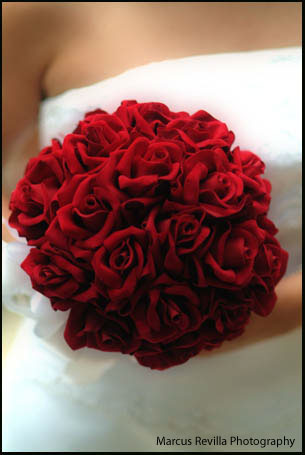- Engagement Rings – The tradition of an engagement ring as a sign of betrothal dates back to a time when gold rings were used as currency. A man gave a woman a ring to signal that she could be trusted with his property. In the 19th century, diamonds and other gems became more popular as engagement rings. Now the diamond solitaire ring is the most popular choice for engagements.
- Wedding Bands – Brides and grooms have exchanged rings as a symbol of unity since primitive times. Rings symbolize eternity because they have no beginning and no end. Wedding rings are worn on the third finger of the left hand because that is where the vena amoris, a vein running from the finger directly to the heart, was thought to be. The vena amoris, as it was later discovered, does not exist.
- Bridal Showers – The custom of throwing a wedding shower for the bride-to-be started in Holland. If a woman’s father disapproved of the man she wanted to marry, he would refuse to give her a dowry. The people in the village would then band together and “shower” the woman with gifts to help her start her new home. Another custom in the 1890s involved hiding presents in an umbrella. When the bride-to-be opened it, she was “showered” with gifts.
- Bridesmaids & Groomsmen – Traditionally, bridesmaids were the siblings and unmarried friends of the bride. They would help her get dressed for her wedding and move all of her belongings to her new home. But more importantly, the bridesmaids and groomsmen had the responsibility of making sure the bride and groom arrived to the ceremony safely and not be befallen by evil spirits or evildoers. That is where the tradition of dressing the same came about, to make the bride and groom indistinguishable from the rest of the bridal party.
- Bouquets – The bouquet of flowers carried by the bride traditionally symbolizes fertility, life, and growth. Some brides choose flowers based on their meaning. Red roses, for example, mean “I love you” and Violets mean “modesty.” The first bouquets were not actually flowers, but were herbs. Their strong aroma was thought to ward off evil spirits.
- Wedding Cakes – The tiered wedding cake we know today originated in Elizabethan times. Small, sweet buns were stacked as a centerpiece by the guests. The bride and groom made a game of trying to kiss over the mound. French chefs in the 17th century began frosting the stacked buns to hold them together.
- Weddings Toasts – In 16th century France, it was customary for noblemen to “drink to” a lady by placing a piece of toast in a cup of wine and passing it around. The last lady to receive the cup got to eat the toast and would then receive the compliments of everyone in the room. This practice formally became known as a “toast.”
- Wedding Favors – Favors also can be traced back to Elizabethan times, when it was customary for brides to hand out lace or ribbon to guests as a show of gratitude.
- Throwing of the Garter & Tossing of the Bouquet – In the 14th century, the bride’s garter was a well sought-after prize. So much so, that guests would immediately rush the altar following the ceremony. The bride would then take off her garter and throw it to protect herself from getting mobbed. Nineteenth-century American brides would throw a small bouquet to each bridesmaid, one of which contained a hidden ring. The bridesmaid to catch the special bouquet was thought to be the next to wed.
- Honeymoons – The “moon” in honeymoon refers to ancient beliefs that the moon was a symbol of fickleness, always changing. The “honey” in honeymoon refers to mead, or metheglin, a fermented honey drink. The bride and groom consumed this drink for the length of the moon’s cycle (thirty days) so they could forget about the rest of the world and concentrate on each other. The thought was that things could change in a month’s time, so the bride and groom spent time getting used to one another on their “honeymoon.”
Source: The Bride: A Celebration by Barbara Tober, Longmeadow Press, 1984





1 comment:
I always wondered where some of this stuff came from.
-Colleen, Austin, Tx.
Post a Comment